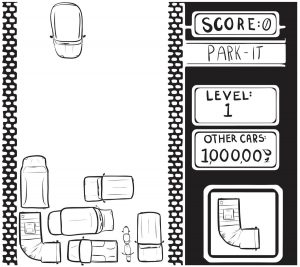This school year, it’s become common for cars to pour into the Redwood parking lots at about 7:40 a.m., 15 minutes before the first school bell rings, only to encounter hordes of cars circling around, searching for a space. The lots are filled with vehicles––parents dropping off children in front of the gym, staff members arriving on campus and students who, despite their early arrival, have difficulty finding an open space.
The lots are filled with a variety of parking spots, 33 of which are reserved for district staff members traveling to and from Redwood throughout the week or attending meetings on campus, according to Assistant Principal Larry Pratt. An additional 30 “visitor” spaces are available, and 29 “reserved” spots are set aside for “vital” staff who are often required to leave campus to attend mid-day meeting or work at other schools in the district. Students are not allowed to park in any of these spaces, and when they do, they risk paying a $40 fine.

Yet to avoid being tardy, Redwood students are choosing to park in the “district-only,” “reserved” and “visitor” spaces. Those who do not want to take the financial risk of parking illegally end up searching for limited street parking, leaving reserved spots empty because so few are consistently used for their intended purpose. In addition, other students without a first period arrive an hour before their classes start in order to secure a parking spot.
It is clear that our school has a major problem accommodating the hundreds of students who drive to school, and this has been a contentious issue since the beginning of the year. Relatively few spaces are available to the increasing number of student drivers, making for overcrowded parking lots and tardy students.
Thankfully, Redwood’s administration has taken the initiative of forming a committee to study the current parking situation and develop recommendations. The committee’s goal is to form suggestions to improve Redwood’s parking issue, according to Pratt.
We support these efforts to alleviate what is becoming an increasingly serious problem and source of frustration for many students. There are a few areas in particular that the committee must consider in order to ensure an effective solution.
Reserved spaces: The “district-only” and other reserved spots have unnecessarily decreased the number of available parking spaces, so we should reapportion many of them for student parking. While it is understandable that the school wants to improve convenience for district staff members, with 92 total reserved spaces, many are often left empty in part because some district staff members don’t use them throughout the entire day.
Parking permits: Currently, 578 permits have been granted to students, but only 390 spots exist, according to Dina Craft, Pratt’s secretary, so even students who have permits are left scrambling to find parking. Next year, the administration should only distribute as many permits as there are spots, and strictly enforce the rule that only cars with permits can use the available parking spaces. This would give students a guarantee that they have a place to park, improving predictability in students’ commutes and lessening the hectic morning rush for a spot.
Additional parking: Earlier this school year, temporary parking spaces were opened on the blacktop basketball courts behind the gym because spaces in the front lot were occupied by solar panel construction equipment. The school shut down these spaces because spring sports teams need them for practice space, according to Pratt. The school should re-open these blacktop spaces and look for other feasible options, as the additional parking appeared to immediately reduce impact on traffic in both the front and back parking lots.
Carpooling: The administration has encouraged students to carpool by offering carpool-only spots in the back lot in previous years, but this has had little impact because it hasn’t been consistently enforced. The administration should enforce mandatory carpooling for families by limiting each family to one permit and create stronger incentives to carpool with non-family members. Not only would carpooling assuage our school’s parking strain, but it would also be environmentally beneficial.
The administration’s attempt to address the availability of student parking is a critical first step in resolving one of our school’s most immediate problems. We hope the parking committee will take prompt action to ensure that next year’s parking situation is less chaotic, less stressful and better serving of the student body.











